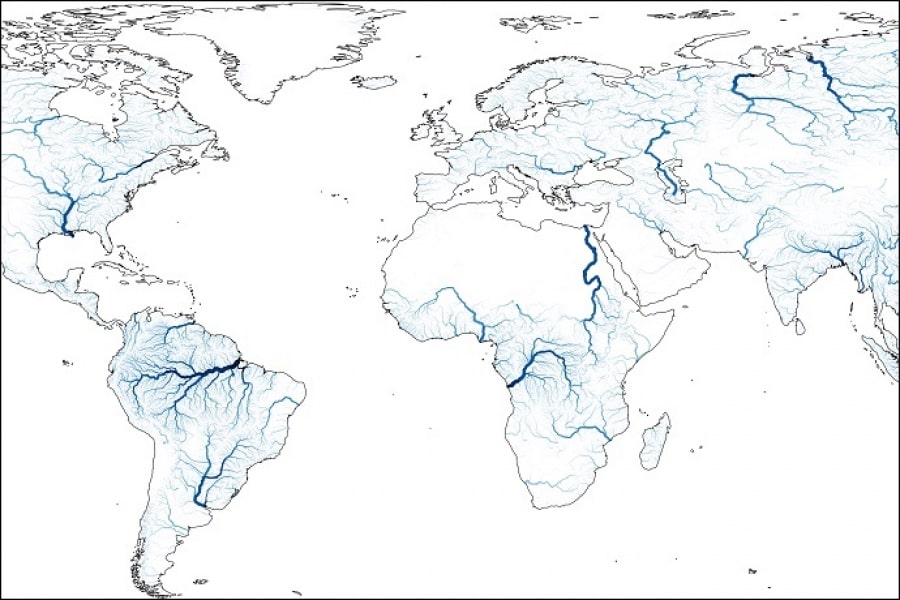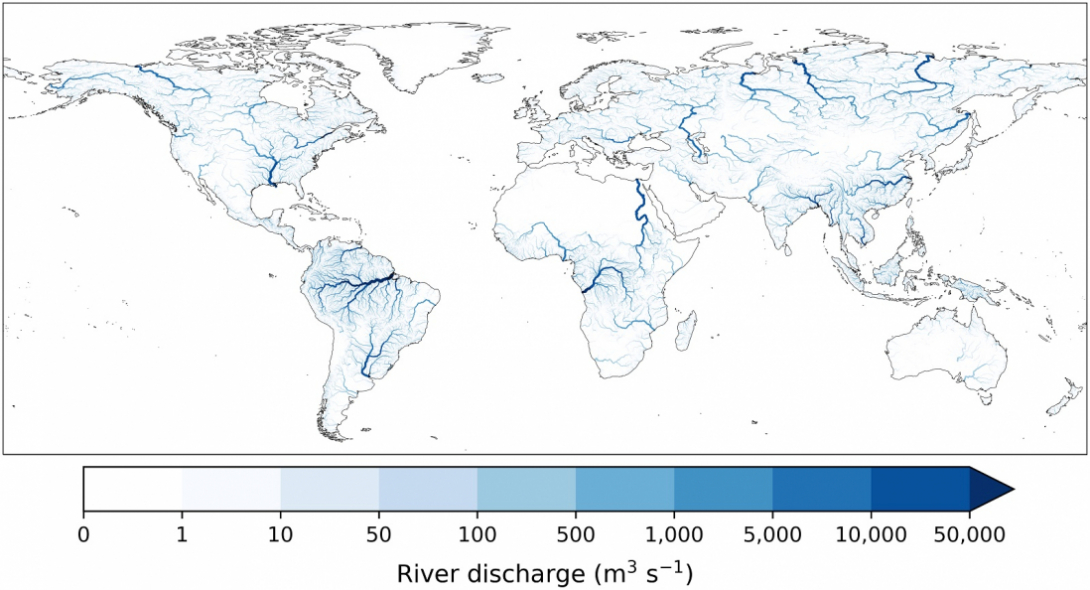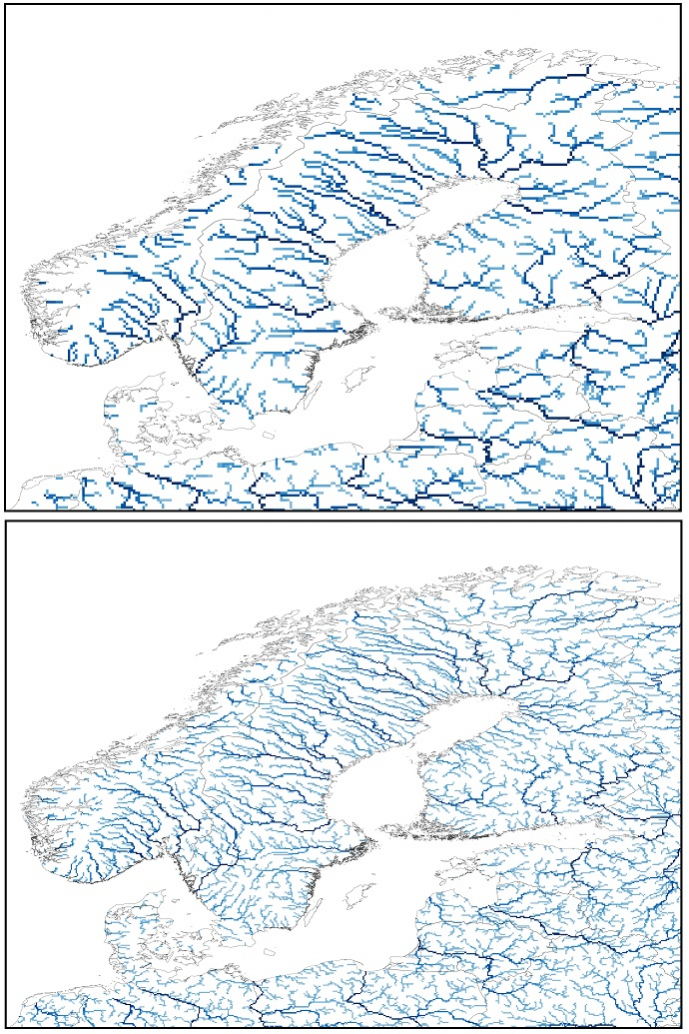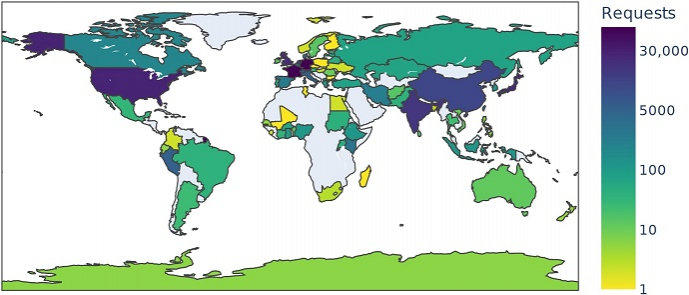

A new, substantially upgraded hydrological reanalysis dataset of the Global Flood Awareness System (GloFAS) from 1980 to July 2022 has been produced by the Joint Research Centre (JRC) of the European Commission in collaboration with ECMWF and released as part of the Copernicus Emergency Management Service (CEMS). It puts river discharge and flood events during that period at the fingertips of users.
The GloFAS v4.0 reanalysis includes daily maps of discharge over the globe at a resolution of 0.05 degrees (about 5 km). It is available in the Climate Data Store of the Copernicus Climate Change Service (C3S) run by ECMWF.
Generating such a high-resolution reanalysis has been made possible by ECMWF’s new high-performance computing facility in Bologna, Italy. This updated version is a new edition of the GloFAS v3.1 reanalysis, which was introduced in 2021. The new dataset uses ERA5 (ECMWF’s latest reanalysis of the atmosphere), satellite-derived datasets, and a large number of ground measurements to describe catchment physical properties and for model calibration, combined with the LISFLOOD hydrological model.
The reanalysis makes it possible to study flood events and droughts globally during a much longer time frame than the period during which GloFAS has been operational. It is launched as the EU holds an extreme weather and natural disasters thematic day at the UN’s 27th Conference of the Parties (COP27) on climate change.

Mean daily river discharge from 1980 to 2019 from the updated GloFAS v4.0 hydrological reanalysis. Right-click on the image to call up a bigger version.
New elements
The open-source LISFLOOD hydrological model determines what happens with water that comes down as rain. It decides to what extent the water evaporates, is absorbed by the soil and plants, or runs off into rivers.
For the reanalysis upgrade, ECMWF and the JRC, which manages CEMS, both worked on LISFLOOD. This included upgrades in hydrological routines and improvements in the management of large input datasets and computational performance.
ECMWF improved the representation of rivers, soil and vegetation in the model, and the JRC calibrated the model and performed a parameter regionalisation for ungauged catchments to ensure the best possible simulation of river flows for all catchments around the world.
The new GloFAS v4.0 hydrological reanalysis also has a finer resolution than before: it works on a 0.05 degree grid (about 5 km) when before it used a 0.1 degree grid (about 10 km).
Significant changes in computational performance, made possible by the parallelisation of routines in the hydrological model LISFLOOD, combined with ECMWF’s new Atos HPCF, have enabled the global simulation at the increased spatial resolution.

Representation of rivers in Scandinavia in GloFAS v3.1 (top) and in the updated version, GloFAS v4.0 (bottom).
The initial release of the new dataset makes river discharge data available from 1980. In early 2023, this will be widened to other variables, such as soil moisture and snow water equivalent.
From the same time, the new GloFAS v4.0 hydrological reanalysis will be updated in near-real-time, with a delay of about three days, to include the latest available forcing data.
More technical details of the new GloFAS v4.0 hydrological reanalysis dataset can be found in the GloFAS Wiki.
Use cases
The reanalysis can be used to monitor hydrological status, in particular water resources, floods and drought evolution across the world.
“A lot of places have no data on river discharge. A country may for example have no way of knowing how much water is going to be discharged into it from rivers outside its borders,” says Christel Prudhomme, the leader of the Environmental Forecasts Team at ECMWF, who is responsible for the CEMS hydrological forecast computational centre that runs GloFAS. “Global simulations thus close an information gap. They provide a first guess of how much water is running in rivers.”
There are also some specific applications, such as the C3S climate bulletin. In addition, the Copernicus Marine Service is investigating whether its ocean modelling can be improved by real-time estimates of river discharge. The GloFAS v4.0 hydrological reanalysis could thus provide an input for an ocean model.
The dataset as a whole can be useful to identify and understand trends in hydrology, in particular whether there are times during which some regions have had higher or lower river flows than usual.
The reanalysis was completed before a major upgrade of the GloFAS forecasting system to higher resolution planned for next year. The new reanalysis will then be used for the initial conditions of GloFAS forecasts. It will thus provide essential input for any early warnings provided by GloFAS forecasts.

Number of Climate Data Store requests for the GloFAS hydrological reanalysis per country.
Background
The Copernicus Emergency Management Service (CEMS), which is managed by the Joint Research Centre of the European Commission, provides information for emergency response in relation to different types of disasters, including meteorological hazards, geophysical hazards, deliberate and accidental human-made disasters and other humanitarian disasters, as well as prevention, preparedness, response, and recovery activities. ECMWF operates the CEMS Hydrological Forecast Centre – Computation running the European and Global Flood Awareness Systems.
